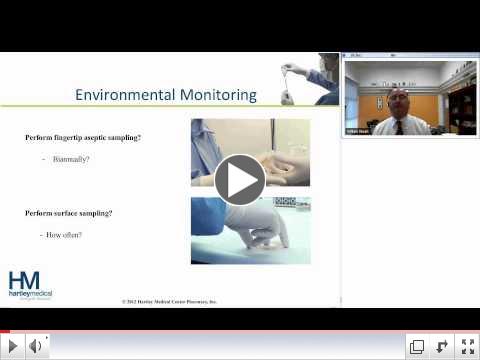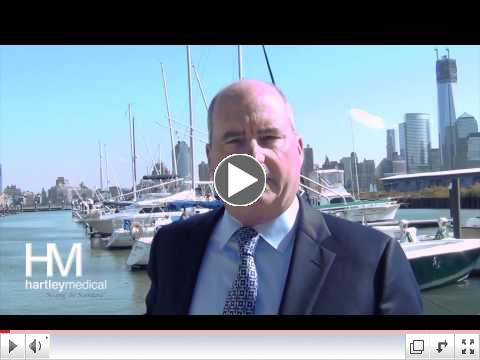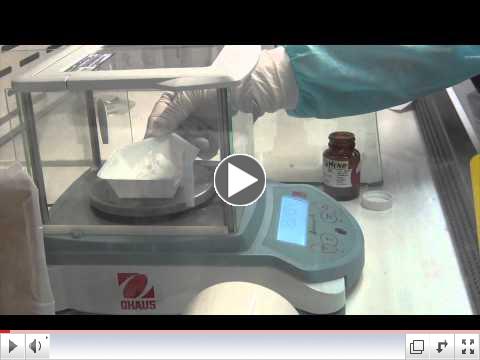|
|
|
|
|
|
|
|
|
Napa Pain Conference, Dr. Carol Warfield: History of Pain Management

The 19th Annual Napa Pain Conference, hosted by Dr. Eric Grigsby, was held September 14-16, 2012, at the Meritage Conference Center in Napa, California. I had the pleasure of participating this year as a registered attendee and was able to sit in on a number of lectures. Many industry leaders were at this meeting, and some great information was presented. I would first like to discuss a presentation on the history of pain management by Dr. Carol Warfield - a very distinguished professor and recognized leader in pain management. She began with historical interpretations of the word "pain" in both Latin ("poema" - translating to "punishment") and Greek ("poine" - translating to "penalty"). The Greek term "poine" was used to describe the Greek Goddess of Revenge whom was sent to punish individuals who had angered the Gods. Dr. Warfield continued with a quote by author C.S. Lewis stating, "Pain is the divine megaphone through which God calls us to worship." Although there is a religious tone to this statement, it is quite intriguing to hear how pain has been regarded by civilizations throughout the ages.
To read the full article, click here.
For more conference recaps, visit the Knowledge Center by clicking here.
| |
Napa Pain Conference, Dr. Elliot Krames: Neuromodulation
 Another presentation given at the Napa Pain Conference was Dr. Elliot Krames', Neuromodulation: The Past, The Present, and The Future. Dr. Krames is a very insightful, colorful speaker, and his career has a significant history to it. He began with the question, "What is neuromodulation?" His answer: "The beauty of science." Dr. Krames proceeded to look at neuromodulation: the past, a little bit of history, and some new devices. He discussed Scribonius Largus, a court physician to a Roman Emperor, and one of the first to use electrical currents to produce transient pain relief using direct application of torpedo fish or eels. Dr. Krames shed light onto the work of various pioneers who used alternating current, and then fast-forwarded to the devices that modulate nerves.
To read the full article, click here.
For more conference recaps, visit the Knowledge Center by clicking here.
| |
|
MARK YOUR CALENDARS
DON'T FORGET . . .
The 16th Annual
North American Neuromodulation Society (NANS) Meeting
December 6 - 9, 2012
at the Wynn Las Vegas in Las Vegas, NV.
For more information, or to register for this event, click here .
|
|
Hartley Medical is once again a proud sponsor of the North American Neuromodulation Society (NANS) Annual Meeting. This year's event takes place December 6-9, 2012 at the Wynn Las Vegas.
Hartley Medical is exhibiting at booth 110, near both Medtronic and Boston Scientific. Be sure to stop by, grab some Godiva and other great giveaways, and say hello!
| |
*** URGENT NOTICE: Your Relationship With Prialt is Changing ***
Recently, we received a phone call from a client, located in Nevada, informing us that a Prialt Sales Representative had just met with her office to explain the changes being implemented at Jazz Pharmaceuticals-the maker of Prialt-that will prohibit her practice from purchasing its compounded Prialt medications from Hartley Medical. This came as shock to her and she expressed that she didn't quite know why this was happening. As one of the nation's leading providers of compounded medications (many containing Prialt), you might imagine our skepticism as we assumed that we would have undoubtedly been informed of any changes well ahead of this particular phone call. Nevertheless, we reached out to Jazz Pharmaceuticals and, after numerous attempts, managed to get a 'higher-up' on the line. Indeed, we learned that Jazz has decided to eliminate all (but one) pharmacies' abilities to purchase, compound, and distribute Prialt to physicians across the country. This is an unfortunate, unwelcome, and, in our most humble opinion, an unnecessary change that will affect your practice; knowing your options and next-steps is vital.
To read the full notice, click here.
| |
Quality is Paramount:
Performing Due Diligence with Compounding Pharmacies
Hartley Medical is continuing its popular online Webinars on topics in compounded sterile pharmaceuticals.
In light of the recent meningitis outbreak, and due to the overwhelming number of requests made by physicians and medical professionals, on October 12, 2012, Hartley Medical hosted a Webinar entitled, "Quality is Paramount: Performing Due Diligence with Compounding Pharmacies."
 This one-hour session visited the important questions that compounding pharmacies should be asked regarding policies and procedures, staff assessment, environmental monitoring programs, and quality assurance and end-product testing. To view the recorded version of this Webinar, click the video provided to the right. This one-hour session visited the important questions that compounding pharmacies should be asked regarding policies and procedures, staff assessment, environmental monitoring programs, and quality assurance and end-product testing. To view the recorded version of this Webinar, click the video provided to the right.
To be added to the invitation list for future Webinars, please e-mail questions@hartleymedical.com.
|
William's Notations from the Advanced Pain Symposium 2012
The New York and New Jersey Societies of Interventional Pain Physicians

I recently returned from the Pain Medicine Symposium 2012: Evolving Advanced Pain Therapies meeting hosted by the New York and New Jersey Societies of Interventional Pain Physicians. This event took place October 19-21, 2012, at the Westin, Jersey City, and it was my first time attending a conference in this area. It was fantastic for my company and my team because we were able to introduce ourselves to many medical professionals whom we have heard of (but never met), introduce ourselves to new colleagues, and once again reconnect with industry leaders.
During this conference, I had the pleasure of attending a lecture by my long-time friend and colleague, Dr. Joshua Prager. His presentation was entitled, Intrathecal Analgesia: the 2012 Guidelines, Prevention of Granuloma - concepts that included patient screening, diagnoses, and methods of treatment. He focused on the drugs and some of the recent studies associated with inflammatory masses. He mentioned that the NANS meeting in December will go in-depth regarding the 2012 Polyanalgesic Consensus Committee's guidelines, specifically for inflammatory masses. I was particularly interested in the treatment regimens and outcomes. The entire presentation was very positive for intrathecal pain professionals, and I, once again, thoroughly enjoyed hearing a portion of Dr. Prager's vast knowledge.
I was also fortunate to attend lectures by Dr. Allen Burton on osteoporosis and spinal fractures, as well as the treatment regimens for vertebroplasty and kyphoplasty. Vertebroplasty and kyphoplasty are topics that I have heard of over the years, but am not familiar with as they are not really applicable to my practice. However, Dr. Burton provided a very insightful understanding of these procedures for treating conditions of chronic pain.
Though I felt very fortunate to have made the journey to the opposite side of the country, I must take a moment to express our deepest condolences to those affected by Hurricane Sandy. This devastating event is at the forefront of all of our minds, and we would like to convey our sympathies to the loved ones of those whose lives were lost due to the storm.
For more conference recaps, visit the Knowledge Center by clicking here.
| |
Neuromodulation: Technology at the Neural Interface recently released its September-October 2012 issue (Volume 15, Number 5).
In this issue, you will find printed versions of the PACC's recommendation articles that were previously offered only through Wiley's online, early view access. For more information, visit Hartley Medical's blog entry entitled, "Polyanalgesic Consensus Conference (PACC) 2012 recommendations" by clicking here. Though we recommend accessing the full articles (which delve into much more detail than provided in this brief overview), you can see a side-by-side comparison of updates to the algorithm, maximum concentrations and dosages, and starting dosage ranges by clicking here.
Hartley Medical is a proud supporter of Neuromodulation.
To obtain the latest issue, click here.
|
|
Hawaii 5-0: Everything's All Right
 | |
Center: Dr. Michael Nichols, Right: William Stuart
|
I was recently invited to take a quick excursion out of the continental U.S. to visit the great state of Hawaii, where I was asked to give a presentation on intrathecal medications. With over twenty medical professionals in attendance - including physicians, physician assistants, nurses, psychologists, and pharmacists - I delved into the specific intrathecal drugs, their pharmacological effects, dosing ranges, and stability results. I discussed both the 2007 and 2012 Polyanalgesic Consensus Committee guidelines, and compared and contrasted the two publications. The audience showed curiosity in micro-dosing (a topic that has been of particular interest for me), so I discussed my experiences with my clients and micro-dosing, as well as the many lectures I have attended on the subject. The audience also asked questions about dosing and dosing changes for Prialt, so I reviewed the many issues relating to drug stability and mentioned that more studies need to be performed. My presentation was well-received, and I am always grateful for these opportunities. During travels, I like to make it a priority to visit clients, and on this trip I was fortunate to visit Dr. Michael Nichols on the Big Island. In the picture provided, you can see we are displaying the Shaka - a Hawaiin hand gesture that can be interpreted as "hang loose" or "right on." This symbol certainly embodies the mentality of Hawaii - where the notion is that everything's all right. And as you can see by the smiles on our faces, it speaks the truth. Throughout 18-holes of golf, we discussed new issues in pain management and intrathecal therapy, and simply enhanced our relationship. I find it paramount to look a client in the eye and express gratitude for doing business with my company - as loyalty is very dear to me and my family. In the end, we shook hands and parted ways. I boarded a plane that night and left thankful for the time that we spent together. | |
 | |
Topical Cream Compounding
|
Your Source for
Compounded Topical Analgesics  E-mail for pricing
|
|
IN THE NEWS!
Taking Big Risk for Pain Relief
 By Jonathan D. Rockoff and Timothy W. Martin, The Wall Street Journal. Posted Oct. 18, 2012. By Jonathan D. Rockoff and Timothy W. Martin, The Wall Street Journal. Posted Oct. 18, 2012.
James Chamberlain, who has been getting steroid injections for the past five years to treat his debilitating back pain, had recently begun a new round of them when he heard such shots have been tied to a deadly fungal-meningitis outbreak. He decided to continue with the treatment anyway, getting his latest injection Thursday. "If I didn't have the epidural shots, I'd be quite miserable and quite lame," said Mr. Chamberlain, 59 years old, of Forest Hills, N.Y.
Clinics and surgical centers that offer such injections say they are fielding a flood of patient questions about safety in the wake of the meningitis outbreak, which federal officials say has killed 20 patients and sickened 254. But doctors say demand for the procedures, in which steroids are injected into the epidural space in the spine, remains strong-a testament to the desperation of people seeking pain relief.
Clinics are turning to alternatives to replace the steroid supplied by New England Compounding Center, the Massachusetts drug-mixing pharmacy that has recalled its products and stopped operating amid a government investigation. Some clinics say they are buying steroids from traditional drug makers, but others say they are also turning to rival compounders as other players in the market push to fill the void. Compounding pharmacies custom-mix medicines but aren't regulated like traditional drug makers.
To access the full article, click here .
|
Napa Pain Conference, Dr. Salim Hayek: Curbing Intrathecal Dose Escalation

At the Napa Pain Conference, Dr. Salim Hayek, Associate Professor at Case Western Reserve University and Division Chief of Pain Medicine at University Hospitals, presented on Curbing Intrathecal Dose Escalation. The doctor began by stating that his objectives were to cover the pharmacokinetics of intrathecal medications, review catheter placement, aid in understanding intrathecal opioids (specifically in non-cancer pain patients), discuss the effects of age, and examine the use of bupivacaine in conjunction with opioids administered intraspinally.
One aspect that the doctor focused on was patient selection: reviewing the patients, differentiating between cancer and non-cancer pain, looking at age, and understanding whether the pain is localized or diffused. He reviewed trial procedures, and discussed intrathecal medications used (including their pharmacology considerations).
To read the full article, click here.
For more conference recaps, visit the Knowledge Center by clicking here.
| |
Napa Pain Conference, Dr. Sean Mackey:
When Acute Pain Becomes Chronic

Dr. Sean Mackey gave a fascinating lecture at the Napa Pain Conference entitled, When Acute Pain Becomes Chronic: What Do We Know Now and How Can We Prevent It?
He began with an in-depth overview of the impact of acute pain transitioning to chronic pain - which included some of the mechanisms and factors that can predict the transition, as well as the tools to prevent the development of chronic pain. Dr. Mackey reviewed the epidemiology of low back pain and presented an interesting statistic asserting that there is a 60 to 90 percent life-time prevalence of low back pain, and that it is the second most common complaint of chronic pain. He dubbed the transition from acute to chronic low back pain, "Catastrophizing."
To read the full article, click here.
For more conference recaps, visit the Knowledge Center by clicking here.
| |
Napa Pain Conference, Dr. Michael Saulino: Intrathecal Baclofen

The last presentation I attended at the Napa Pain Conference was Dr. Michael Saulino's Optimizing Outcomes with Intrathecal Baclofen Therapy. Dr. Saulino is widely known in the interventional pain and rehabilitation arenas. He is a very reputable individual, and he has a great personality ... and I enjoy my interactions with fellow The Godfather movies aficionados.
During his discussion of intrathecal baclofen therapy, the doctor reviewed complex interactions between five factors: 1) the patient, 2) the clinician, 3) the device, 4) the agent, and 5) the disease (illness). Intrathecal baclofen (ITB) therapy is approved for severe spasticity of spinal and cerebral origin, and spasticity is defined as the velocity dependent resistance to the passive range of motion. Therefore, ITB is approved for spinal cord injuries, multiple sclerosis, cerebral palsy, strokes, and traumatic brain injury. Other potential opportunities for utilizing ITB are for hereditary spastic paresis conditions, transverse myelitis, and various dystonias.
To read the full article, click here.
For more conference recaps, visit the Knowledge Center by clicking here.
| |
|
|
|
|
About Hartley Medical
Hartley Medical is the nation's leading provider of the highest quality sterile pharmaceuticals for intra-spinal, infusion therapy patients. Our world-class pharmacy is primarily dedicated to the custom compounding of medications for the treatment of pain and movement disorders.
Owned and directed by William A. Stuart, RPh - acknowledged pioneer in the field of pharmaceutical sterile compounding - Hartley, prior to its national expansion, established itself as one of the most successful and professionally distinguished pharmacies in the state of California.
We now serve over 400 leading pain physicians and premier health care institutions across the nation.
|
Disclaimer. The information contained in this publication is provided "as is" and without warranty, expressed or implied. Hartley Medical assumes no responsibility for any damages of any kind resulting from the procedures contained herein.
|
|
|
|
|
|